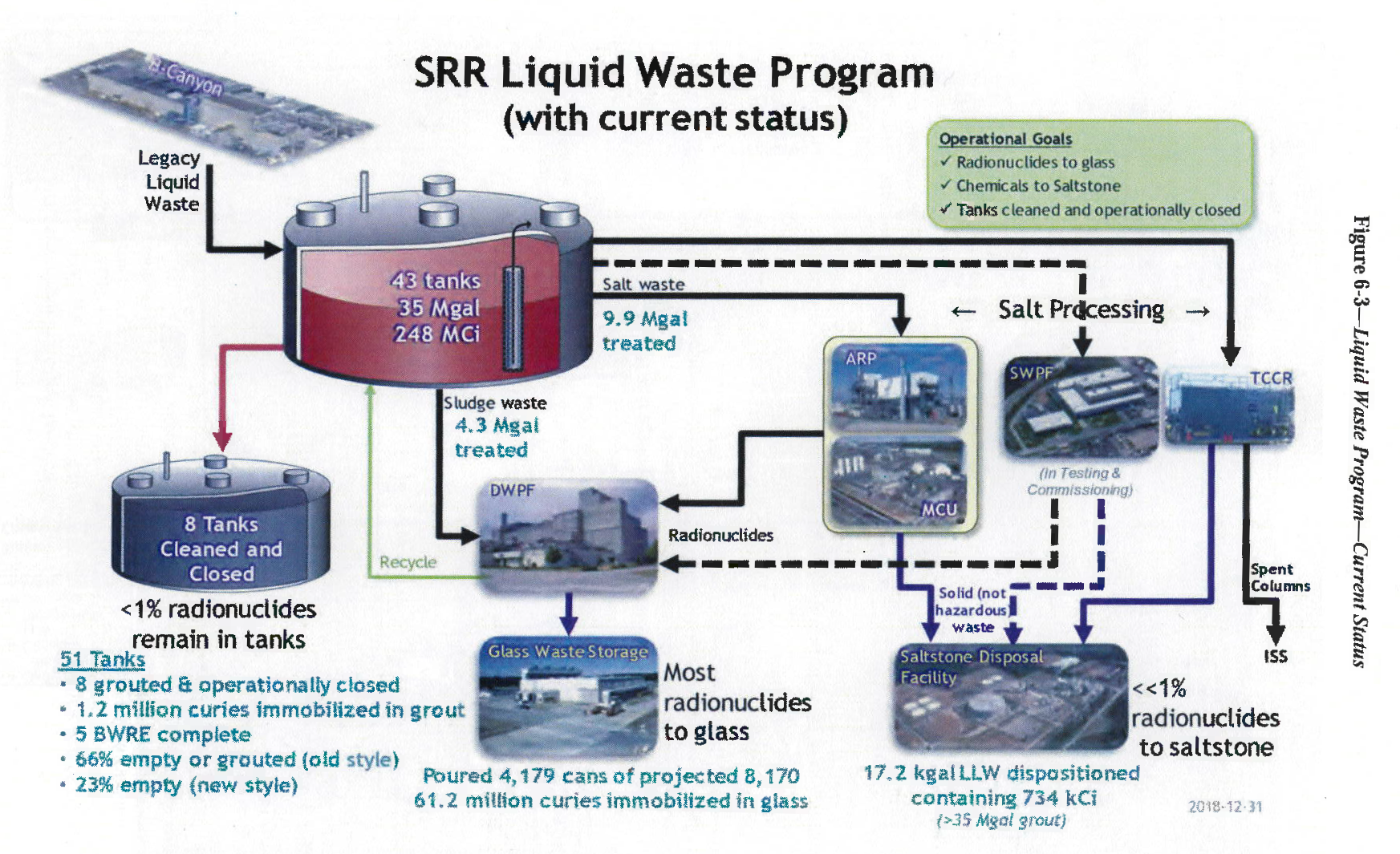
High-level radioactive liquid waste is generated by SRS as a by-product from the processing of nuclear materials. The waste, totaling about 35 million gallons, was historically stored in 51 underground carbon-steel waste tanks grouped into two “tank farms” (F & H Area tank farms). Waste storage continues in 43 tanks; 16 of these tanks, without adequate secondary containment, are under a DHEC closure schedule.
DHEC has several regulatory mechanisms that require treatment of high-level waste and closure of tanks on a schedule in accordance with DHEC-approved plans. DHEC has worked with DOE to develop plans that reduce risk and minimize radioactive residuals in SC. DHEC has permitted several large and pilot-scale treatment facilities for this liquid waste, some of which are the only operational facilities of their kind in the nation.
- Since 1996, the Defense Waste Processing Facility (DWPF) has operated to process the sludge portion of this waste to a glass form. The treated glass waste form is intended to be disposed of in a federal repository once one is approved. The glass logs are currently stored on-site.
- A large Salt Waste Processing Facility (SWPF), constructed under a DHEC permit, began hot commissioning in October 2020 and hot operations in January 2021.
- The SWPF technology was first demonstrated at the Actinide Removal Process (ARP) and Modular Caustic Side Solvent Extraction Unit (MCU), which processed 7.4 million gallons of radioactive salt waste before it was shut down to allow for SWPF startup.
- The Tank Closure Cesium Removal (TCCR) Unit is a supplemental at-tank process which removes cesium from salt waste.
- Decontaminated salt solution is incorporated in grout and disposed at the Saltstone Disposal Facility on-site.
The existing treatment facilities have enabled closure of eight liquid waste tanks at SRS, under DHEC-approved closure plans with input from the public, EPA and the NRC. A Dispute Resolution Agreement, signed in 2016, commits DOE to additional and accelerated treatment capacities.
The startup of treatment in the SWPF is designed to reduce tank volumes more quickly; however, DOE still projects waste treatment and tank closure into the 2030s.